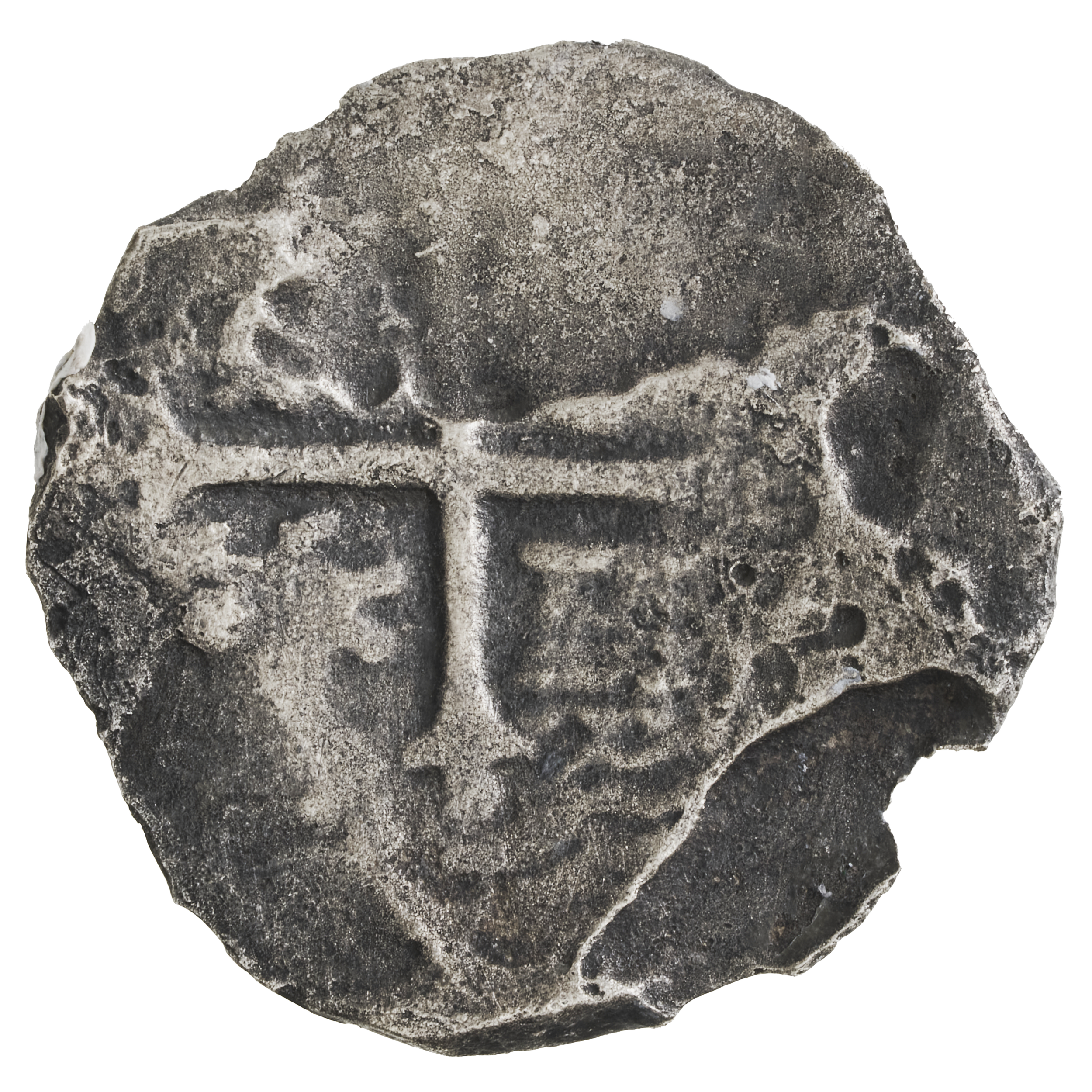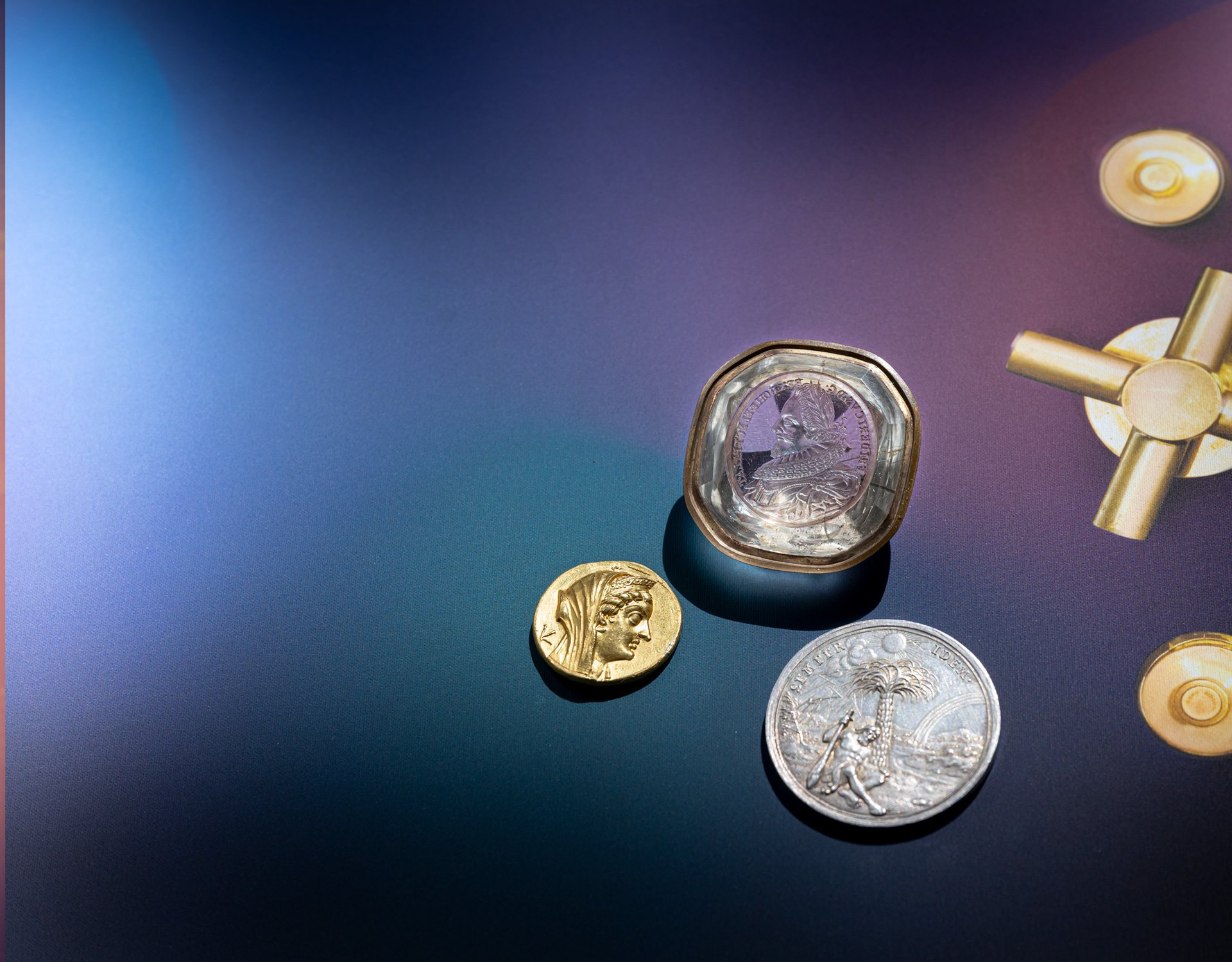Old Treasures
Newly Discovered
Highlights from the vault
The Coin Collection presents never-before-seen pieces from its vault. Discover the oldest coin of the Greeks, the earliest portraits on coins and the unique crystal seal of the Bohemian Winter King.
Highlights from the Vault
People often ask: “What else is hiding in the vault?”. Our collection has grown over the centuries and is so extensive that we can only show a fraction of it in our permanent exhibition. A selection of objects, whose history we tell, show highlights made of gold, silver, ivory, precious stones or sometimes even paper. There are topics familiar to our visitors, such as the coins and medals of the Wittelsbach dynasty, but we also show less known items, such as Byzantine or Ottoman coins. Let us surprise you!
Arsinoë II
This coin with the portrait of the Egyptian queen Arsinoë II Philadelphos is made of pure gold. Her husband and brother Ptolemy II minted the coin after her death in 253 BC. She is depicted with the attributes of various goddesses: The stephane (crown) is a sign of Hera or Aphrodite, the sceptre and veil identify her as a married queen.
This role of women on coins is completely new!
Egypt
A sphinx lies in front of a column –- does this masterful cameo come from Egypt? After Augustus’' victory over Cleopatra in 31 BC, an ‘Egyptomania’ set in among the Roman upper class. Even as a fragments, the stone loses none of hisits charm. However, it is a Roman work and shows what fascinated the Romans about the ‘exotic’ Egyptian culture.
Frederick V of the Palatinate
This seal stamp (typar) is a unique treasure. It belonged to Frederick V, Elector Palatine, who was King of Bohemia as Frederick I in 1619/20. The design of the rock crystal goes back to a medal. The king was able to press it into wax and use it to seal letters, for example. Together with the Wittelsbachs’' Palatinate collections, it came to Munich at the end of the 18th century.
Schiffsmünze
When the Spanish and Portuguese conquerors came to South America, they were looking for gold and mainly found silver. They had unimaginable quantities of metal extracted by slaves in mines and minted into trade coins. This wealth reached Europe by sea and from there flooded the whole world. This coin comes from the wreck of the São José, which sank off Mozambique in 1622 on its way from Portugal to India. It would have been used to buy spices, silk or porcelain.
Previous Exhibitions


















